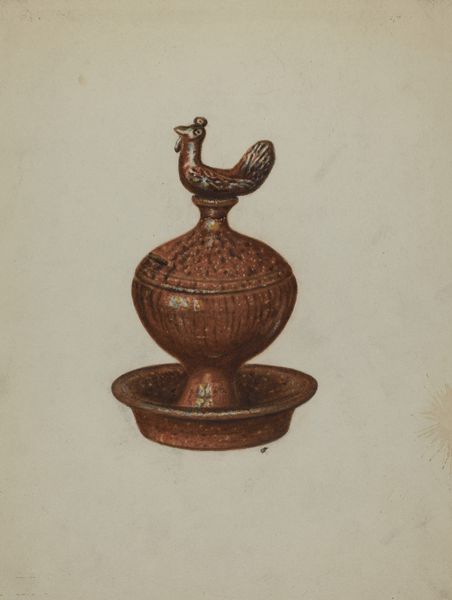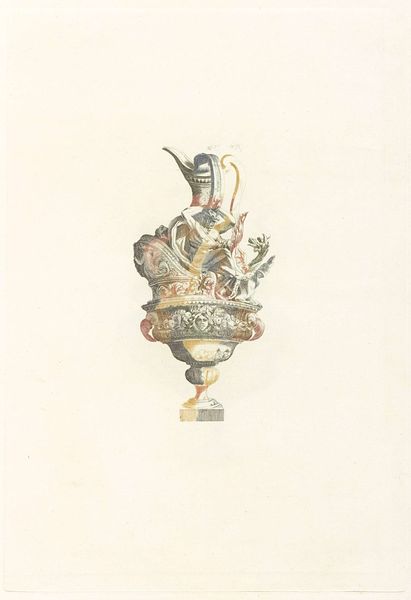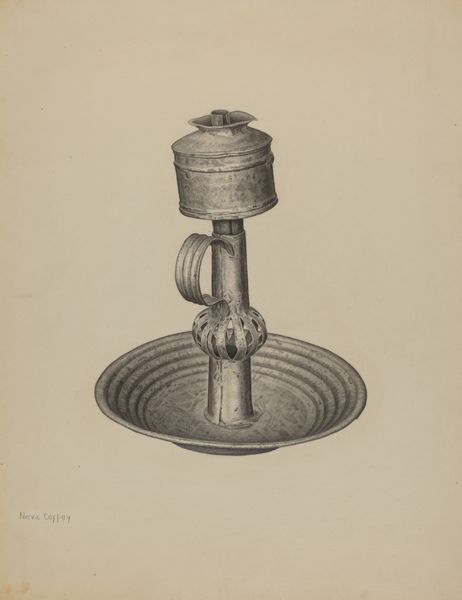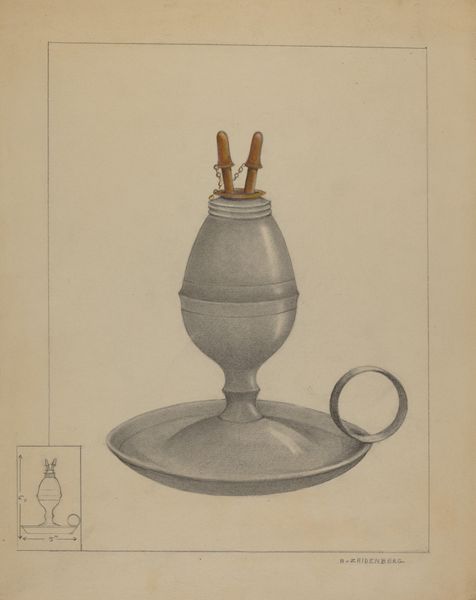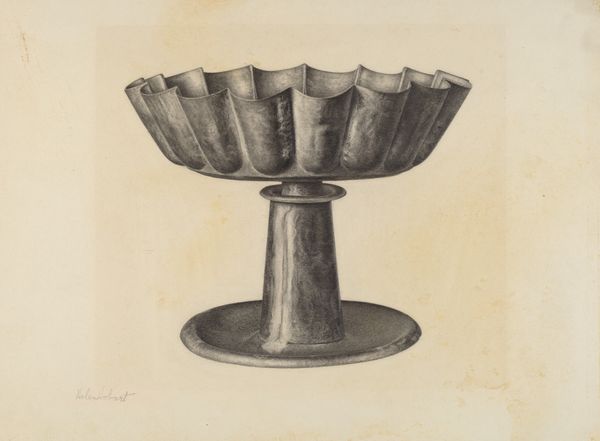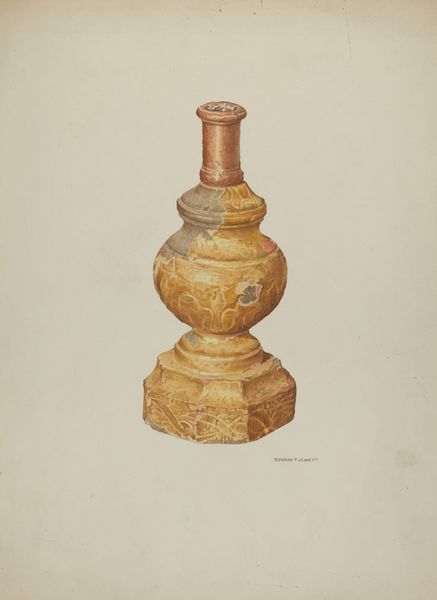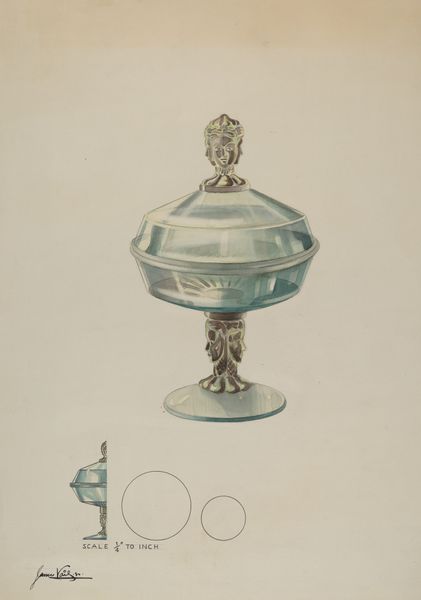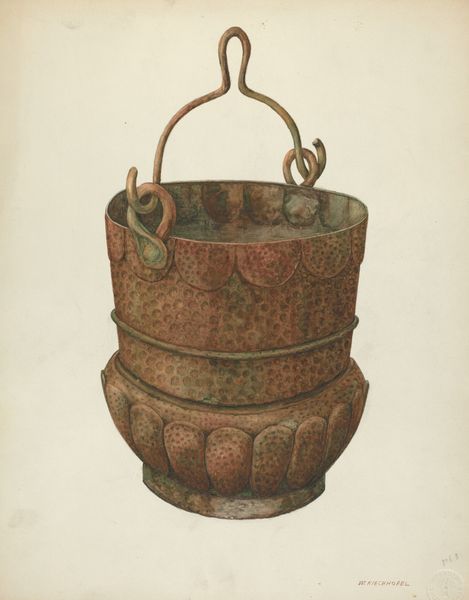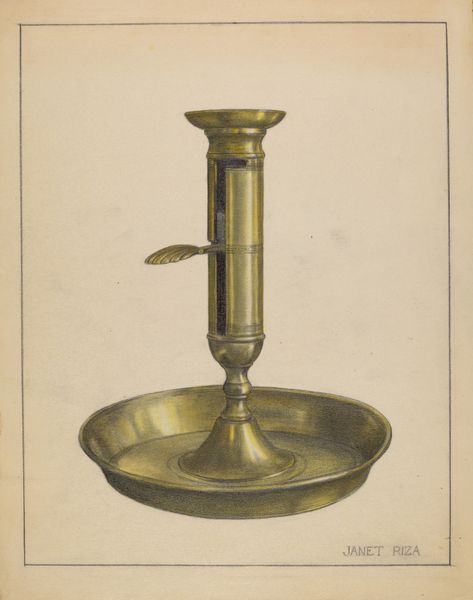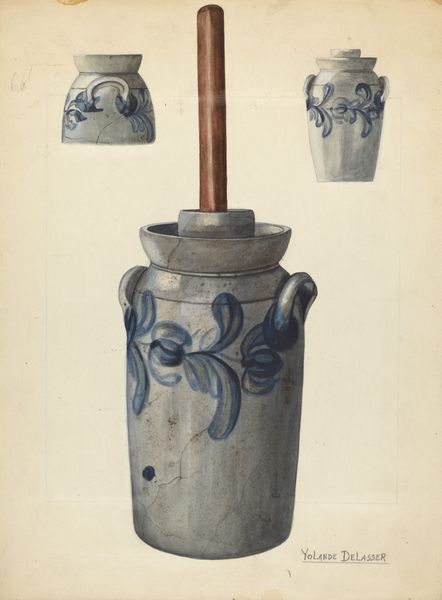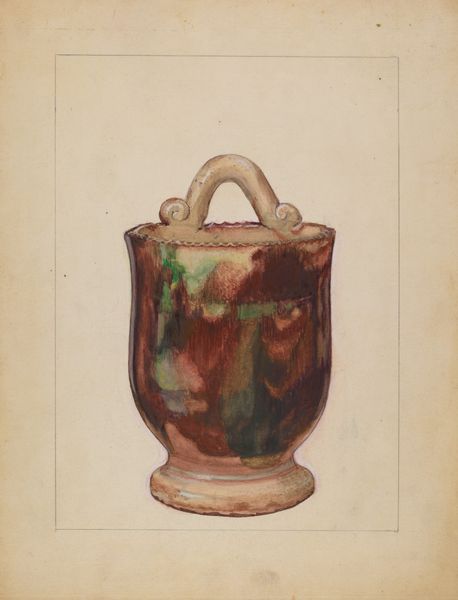
drawing, watercolor, sculpture
#
drawing
#
sculpture
#
landscape
#
charcoal drawing
#
watercolor
#
sculpture
#
watercolour illustration
#
watercolor
Dimensions: overall: 35.5 x 26.7 cm (14 x 10 1/2 in.) Original IAD Object: 70" high
Copyright: National Gallery of Art: CC0 1.0
Editor: Here we have Raymond E. Noble's "Stone Fountain," created in 1939, rendered in watercolor and charcoal. It strikes me as almost melancholic, a beautiful object tinged with decay. What stands out to you most in this piece? Curator: I see a compelling tension here. On one hand, the fountain represents civic pride and idealized beauty, a planned imposition onto the landscape, suggesting control and even a kind of authority. On the other hand, we see signs of disrepair and nature reclaiming it – moss, discoloration. I wonder about its relationship to the power structures that would commission such an object in the late 1930s? Do you see how this reflects social hierarchies or ideologies of the time? Editor: I didn’t consider that at first. So you’re suggesting the fountain, even in its dilapidated state in this rendering, hints at systems of control? Like, who had access to public amenities and who didn't? Curator: Exactly. Public art isn't inherently neutral. Consider how fountains, in particular, have historically served as gathering places but were also often regulated spaces, reflecting social stratification. Who was allowed to linger, and who was moved along? Does the fact that this one is no longer functioning – or is presented as such – speak to shifts in those power dynamics, a critique maybe? Editor: That’s a very different way of seeing it than just a pretty fountain. It almost becomes a symbol of lost authority or a reminder of inequalities. It makes me rethink the intention behind depicting it this way. Curator: Precisely! And questioning intention is key. Art serves as a window into the cultural landscape of its time, inviting us to dissect and confront prevailing narratives. Editor: I'll definitely remember to dig deeper and think about these contexts moving forward. Thanks for the insightful perspective.
Comments
No comments
Be the first to comment and join the conversation on the ultimate creative platform.

